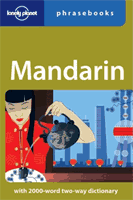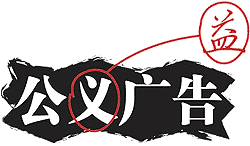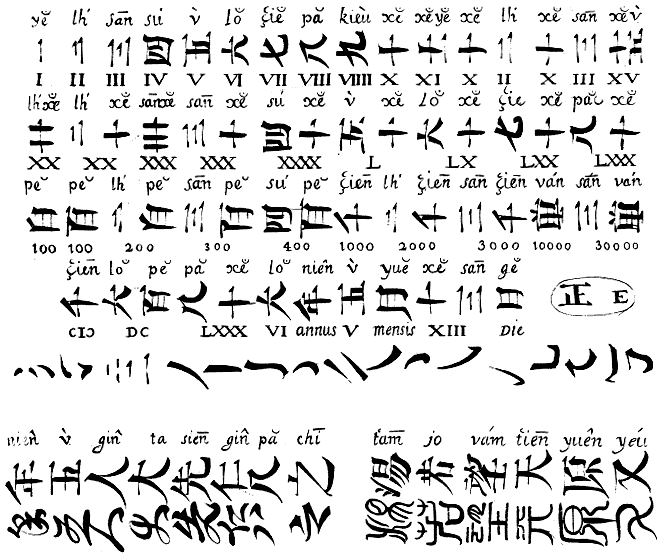Sino-Platonic Papers has just released online its second compilation of book reviews. Here are the books discussed. (Note: The links below do not lead to the reviews but to other material. Use the link above.)
Invited Reviews
- William A. Boltz, “The Typological Analysis of the Chinese Script.” A review article of John DeFrancis, Visible Speech, the Diverse Oneness of Writing Systems.
- Paul Varley and Kumakura Isao, eds., Tea in Japan: Essays on the History of Chanoyu. Reviewed by William R. LaFleur .
- Vladimir N. Basilov, ed., Nomads of Eurasia. Reviewed by David A. Utz.
Reviews by the Editor
- “Philosophy and Language.” A review article of Françcois Jullien, Procès ou Création: Une introduction a la pensée des lettrés chinois.
Language and Linguistics
- W. South Coblin, A Handbook of Eastern Han Sound Glosses.
- Weldon South Coblin. A Sinologist’s Handlist of Sino-Tibetan Lexical Comparisons.
- ZHOU Zhenhe and YOU Rujie. Fangyan yu Zhongguo Wenhua [Topolects and Chinese Culture].
- CHOU Fa-kao. Papers in Chinese Linguistics and Epigraphy.
- ZENG Zifan. Guangzhouhua Putonghua Duibi Qutan [Interesting Parallels between Cantonese and Mandarin].
- Luciana Bressan. La Determinazione delle Norme Ortografiche del Pinyin.
- JIANG Shaoyu and XU Changhua, tr. Zhongguoyu Lishi Wenfa [A Historical Grammar of Modern Chinese] by OTA Tatsuo.
- McMahon, et al. Expository Writing in Chinese.
- P. C. T’ung and D. E. Pollard. Colloquial Chinese.
- Li Sijing, Hanyu “er” Yin Shih Yanjiu [Studies on the History of the “er” Sound in Sinitic].
- Maurice Coyaud, Les langues dans le monde chinois.
- Patricia Herbert and Anthony Milner, eds., South-East Asia: Languages and Literatures; A Select Guide.
- Andrew Large, The Artificial Language Movement.
- Wilhelm von Humboldt, On Language: The Diversity of Hunan Language-Structure and Its Influence on the Mental Development of Mankind.
- Vitaly Shevoroshkin, ed., Reconstructing Languages and Cultures.
- Jan Wind, et al., eds., Studies in Language Origins.
Short Notices
- A. Kondratov, Sounds and Signs.
- Jeremy Campbell, Grammatical Man: Information, Entropy, Language, and Life.
- Pitfalls of the Tetragraphic Script.
Lexicography and Lexicology
- MIN Jiaji, et al., comp., Hanyu Xinci Cidian [A Dictionary of New Sinitic Terms]
- LYU Caizhen, et al., comp., Xiandai Hanyu Nanci Cidian [A Dictionary of Difficult Terms in Modern Sinitic].
- Tom McArthur, Worlds of Reference: Lexicography, learning and language from the clay tablet to the computer.
A Bouquet of Pekingese Lexicons
- JIN Shoushen, comp., Beijinghua Yuhui [Pekingese Vocabulary].
- SONG Xiaocai and MA Xinhua, comp., Beijinghua Ciyu Lishi [Pekingese Expressions with Examples and Explanations] .
- SONG Xiaocai and MA Xinhua, comp., Beijinghua Yuci Huishi [Pekingese Words and Phrases with Explanations] .
- FU Min and GAO Aijun, comp., Beijinghua Ciyu (Dialectical Words and Phrases in Beijing).
A Bibliographical Trilogy
- Paul Fu-mien Yang, comp., Chinese Linguistics: A Selected and Classified Bibliography.
- Paul Fu-mien Yang, comp., Chinese Dialectology: A Selected and Classified Bibliography.
- Paul Fu-mien Yang, comp., Chinese Lexicology and Lexicography: A Selected and Classified Bibliography.
Orality and Literacy
- Jack Goody. The interface between the written and the oral.
- Jack Goody. The logic of writing and the organization of society.
- Deborah Tannen, ed., Spoken and Written Language: Exploring Orality and Literacy.
Society and Culture
- Scott Simmie and Bob Nixon, Tiananmen Square.
- Thomas H. C. Lee, Government Education and Examinations in Sung China.
- ZHANG Zhishan, tr. and ed., Zhongguo zhi Xing [Record of a Journey to China].
- LIN Wushu, Monijiao ji Qi Dongjian [Manichaeism and Its Eastward Expansion].
- E. N. Anderson, The Food of China.
- K. C. Chang, ed., Food in Chinese Culture: Anthropological and Historical Perspectives.
- Jacques Gemet, China and the Christian Impact: A Conflict of Cultures.
- D. E. Mungello, Curious Land: Jesuit Accommodation and the Origins of Sinology.
Short Notice
- Roben Jastrow, The Enchanted Loom: Mind in the Universe.
In Memoriam
Chang-chen HSU
August 6, 1957 – June 27, 1989
- Hsu Chang-chen, ed., and tr., Yin-tu hsien-tai hsiao-shuo hsüan [A Selection of Contemporary Indian Fiction].
- Hsu Chang-chen, T’o-fu tzu-huiyen-chiu (Mastering TOEFL Vocabulary).
- Hsu Chang-chen, Tsui-chung-yao-te i pai ke Ying-wen tzu-shou tzu-ken (100 English Prefixes and Word Roots).
- Hsu Chang-chen, Fa-wen tzu-hui chieh-koufen-hsi — tzu-shou yü tzu-ken (Les préfixes et les racines de la langue française).
- Hsu Chang-chen, comp. and tr., Hsi-yü yü Fo-chiao wen-shih lun-chi (Collection of Articles on Studies of Central Asia, India, and Buddhism).
This is SPP no. 14, from December 1989. The entire text is now online as a 7.3 MB PDF.
See my earlier post for the contents of the first SPP volume of reviews and a link to the full volume.

 The University of Hawai`i Press has just released another title in its excellent ABC Chinese Dictionary Series: the
The University of Hawai`i Press has just released another title in its excellent ABC Chinese Dictionary Series: the  For the latest (sixth) edition of its Mandarin phrasebook, Lonely Planet has abandoned its
For the latest (sixth) edition of its Mandarin phrasebook, Lonely Planet has abandoned its 
